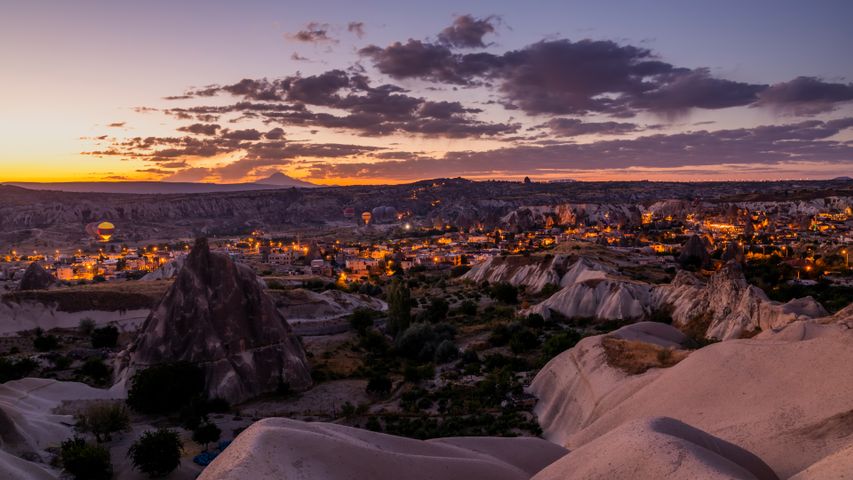Badlands National Park, South Dakota, USA
© Dennis Frates/Alam
Baddest of the badlands
Welcome to the expansive, layered landscape of Badlands National Park, in the US State of South Dakota. It's enjoyed government protection since 1939, first as a US national monument and more completely after it was upgraded to national park status on this day in 1978. The park protects more than 98,700 hectares of dramatically eroded bedrock replete with fossil beds - as well as America's largest mixed-grass prairie, hosting bison, prairie dogs, and endangered black-footed ferrets.
Before it was a national park, Native Americans called the Badlands home for more than 10,000 years. The Lakota had displaced other tribes to control the region by about 150 years ago - the same time settlers from the East were undermining Native power structures throughout the frontier. In response to these incursions, many Lakota in the late 19th century embraced a cross-tribal spiritual movement known as the 'Ghost Dance'. It was a system of rituals - including the namesake circle dance often performed here in the Badlands - believed to impede the encroachment of white settlers and deliver Natives from violence. But those efforts seemed futile by late 1890 as, just south of here, conflicts culminated in the Wounded Knee massacre where US forces killed more than 250 unarmed Lakota men, women, and children.
The conflict and ensuing tragedy is one of American history's ugliest chapters - but it bears reflection as we ponder the Badlands' past, as vast and multilayered as the bedrock that makes it up.
Related Images
Bing Today Images






 Seceda, a peak in the Dolomites, South Tyrol, Italy
Seceda, a peak in the Dolomites, South Tyrol, Italy
 Delicate Arch, Arches National Park, Utah, United States
Delicate Arch, Arches National Park, Utah, United States
 Cinque Torri, Dolomites, Italy
Cinque Torri, Dolomites, Italy
 Chisos Mountains, Big Bend National Park, Texas, United States
Chisos Mountains, Big Bend National Park, Texas, United States
 A train running along Hozugawa River in Arashiyama, Kyoto, Japan
A train running along Hozugawa River in Arashiyama, Kyoto, Japan
 Mount Burgess and Emerald Lake in Yoho National Park, British Columbia, Canada
Mount Burgess and Emerald Lake in Yoho National Park, British Columbia, Canada
 Zion National Park, Utah, United States
Zion National Park, Utah, United States
 Hot air balloons over Göreme Historical National Park in Cappadocia, Türkiye
Hot air balloons over Göreme Historical National Park in Cappadocia, Türkiye